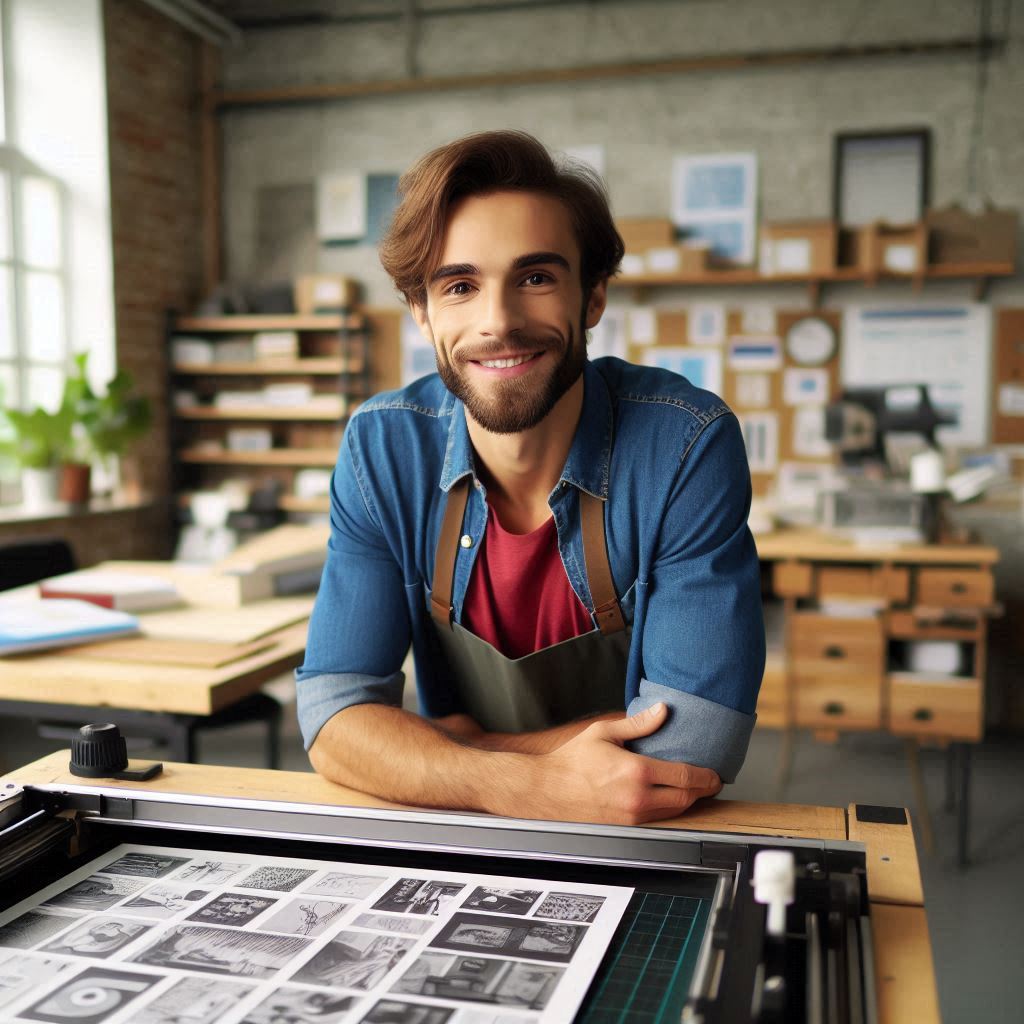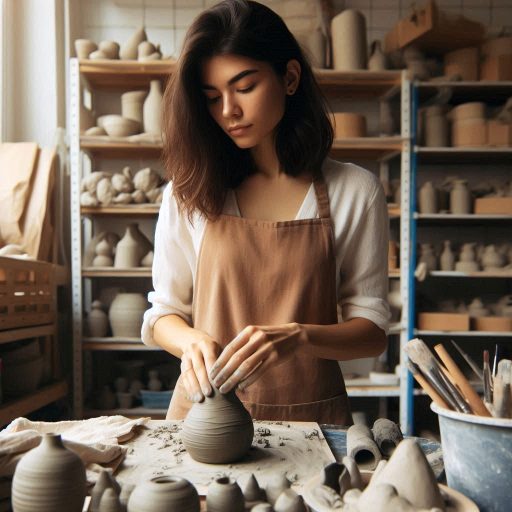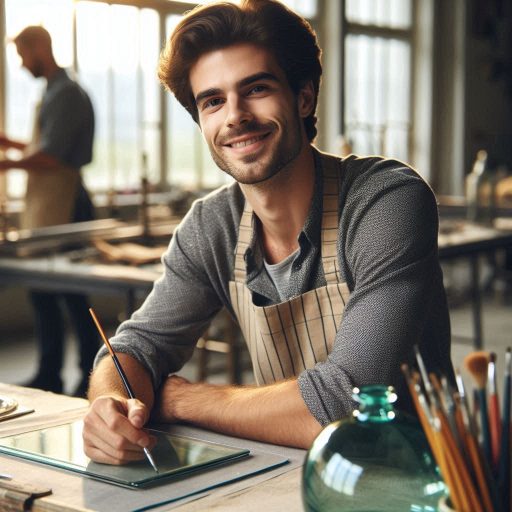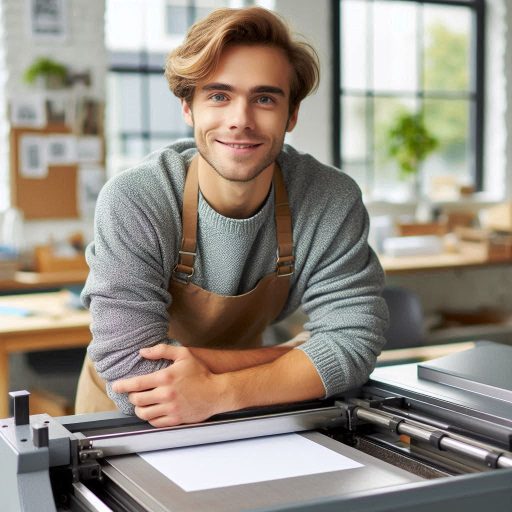Introduction
When it comes to printmaking, finding the perfect balance between creativity and technique is crucial for producing successful and impactful prints.
Printmakers must navigate between pushing their creative boundaries while also mastering the technical aspects of the craft.
The Importance of Creativity in Printmaking
Creativity is the driving force behind innovative and original prints.
It allows printmakers to experiment with new ideas, techniques, and materials, pushing the boundaries of traditional printmaking processes.
Without creativity, prints can lack depth and originality, failing to captivate the audience.
The Role of Technique in Printmaking
Technique is the foundation of quality in printmaking.
It involves mastering the technical aspects of the craft, such as carving, inking, and printing, to ensure precision and consistency in the final prints.
A strong technical skill set allows printmakers to execute their creative ideas with finesse and expertise.
Strategies for Balancing Creativity and Technique
One way to strike a balance between creativity and technique is to start with a solid technical foundation and then gradually incorporate creative elements into the process.
By honing their technical skills first, printmakers can then confidently experiment with different creative approaches, knowing they have the technical expertise to execute their ideas effectively.
Another strategy is to collaborate with other artists or mentors who possess complementary skills.
By working with individuals who excel in areas where they may lack expertise, printmakers can learn new techniques while also gaining fresh perspectives and insights that can fuel their creativity.
In essence, finding the balance between creativity and technique in printmaking is essential for producing high-quality prints that resonate with audiences.
By embracing both aspects of the craft and continuously pushing boundaries, printmakers can create prints that are not only technically proficient but also visually engaging and impactful.
Understanding Creativity in Printmaking
Creativity in printmaking involves pushing boundaries and thinking outside the box.
It’s about experimenting with techniques, textures, and colors to create unique artworks.
Printmakers use their imagination to come up with innovative ideas for their prints.
Defining creativity in the context of printmaking
Creativity in printmaking refers to the ability to express ideas and concepts through various printmaking techniques.
It involves the use of originality and imagination to create visually appealing and thought-provoking artworks that stand out from the rest.
Role of creativity in creating unique and innovative prints
Creativity plays a crucial role in printmaking as it allows artists to explore new possibilities and approaches to the medium.
Transform Your Career Today
Unlock a personalized career strategy that drives real results. Get tailored advice and a roadmap designed just for you.
Start NowBy incorporating inventive techniques and unconventional materials, printmakers can produce prints that are not only visually captivating but also conceptually rich.
Examples of famous printmakers known for their creative approach
- Pablo Picasso: Picasso was known for his experimental approach to printmaking, using innovative techniques such as linocuts and aquatint to create bold and expressive prints.
- Helen Frankenthaler: Frankenthaler was a pioneer of the color field movement in printmaking, using innovative methods like the soak-stain technique to create abstract and vibrant prints.
- Yayoi Kusama: Kusama’s iconic polka dots and repetitive patterns have made her a standout figure in the world of printmaking, showcasing her unique and imaginative approach to the medium.
In fact, creativity is a driving force in printmaking, allowing artists to break free from traditional constraints and explore new possibilities.
By embracing their creative instincts and experimenting with innovative techniques, printmakers can elevate their work to new heights and leave a lasting impact on the art world.
Read: Art Exhibitions: Showcasing Your Sculpture Work
Exploring Techniques in Printmaking
Techniques in printmaking and their significance
Techniques in printmaking refer to the various methods and processes used to create prints.
These techniques are crucial in determining the final outcome of the artwork and play a significant role in the overall aesthetic and visual appeal of the print.
By understanding and mastering these techniques, artists can effectively convey their creative vision and produce high-quality prints that resonate with the audience.
Different techniques used in printmaking
Relief
Relief printing involves carving an image into a block or plate, applying ink to the raised surface, and transferring the image onto paper by pressing it against the inked surface.
This technique is commonly used in woodcut and linocut printmaking.
Intaglio
In intaglio printing, the image is incised or etched into a metal plate using tools or chemicals.
Ink is then applied to the plate, wiped off the surface, and transferred onto paper under pressure.
Common intaglio techniques include engraving, etching, and aquatint.
Lithography
Lithography is a planographic printmaking technique that relies on the repulsion of oil and water.
The image is drawn with greasy materials on a flat stone or metal plate, then treated with chemicals to fix the image.
Ink is applied to the plate, adhering to the greasy areas, and transferred onto paper.
Screen Printing
Screen printing, also known as silkscreen or serigraphy, involves using a stencil to create the image on a mesh screen.
Ink is then forced through the open areas of the stencil onto the paper below.
This technique allows for vibrant colors and precise details in the final print.
How mastering techniques can enhance the quality of prints
Mastering techniques in printmaking is essential for artists to create high-quality prints that effectively convey their artistic expression.
By honing their skills in various printmaking techniques, artists can achieve greater control over the medium, explore new creative possibilities, and produce prints with rich textures, intricate details, and captivating visual effects.
Transform Your Career Today
Unlock a personalized career strategy that drives real results. Get tailored advice and a roadmap designed just for you.
Start NowAdditionally, mastering techniques allows artists to experiment with different approaches, push the boundaries of traditional printmaking, and develop their unique style and artistic voice.
Ultimately, the mastery of techniques in printmaking enables artists to elevate the quality of their prints, captivate their audience, and leave a lasting impact in the world of printmaking.
Read: Interview Tips for Aspiring Sculptors and Designers
Challenges of Balancing Creativity and Technique
Printmaking is a unique art form that requires a delicate balance between creativity and technique.
While mastering the technical aspects of printmaking is essential, focusing too much on technique can sometimes hinder the creative process.
On the other hand, prioritizing creativity over technique may result in works that lack refinement and execution.
Here are some common challenges faced by printmakers when trying to strike a balance between creativity and technique, along with tips on how to overcome them:
Identifying Common Challenges
- Overemphasis on technique: Printmakers may become too preoccupied with perfecting the technical aspects of printmaking, leading to works that lack spontaneity and originality.
- Fear of experimentation: Printmakers may be reluctant to push the boundaries of traditional techniques for fear of making mistakes or producing subpar work.
- Lack of technical proficiency: Some artists may struggle with the technical aspects of printmaking, making it difficult to execute their creative vision effectively.
- Pressure to conform: Printmakers may feel pressured to adhere to conventional techniques and styles rather than exploring new ways of expression.
Impacts of Focusing Too Much on Technique or Creativity
When printmakers lean too heavily towards either extreme, it can have detrimental effects on the quality and authenticity of their work.
Here are some ways in which an imbalance between creativity and technique can manifest:
- Stifled creativity: Excessive focus on technique can stifle experimentation and limit artistic growth, resulting in repetitive and uninspired work.
- Lack of innovation: Relying solely on traditional techniques can inhibit innovation and hinder the development of a unique artistic voice.
- Inconsistent quality: Prioritizing creativity over technique without the necessary skills can lead to inconsistent quality in the final prints.
- Missed opportunities: Overemphasis on one aspect may cause printmakers to overlook new possibilities and limit their artistic potential.
Tips for Finding a Harmonious Balance
Successfully balancing creativity and technique in printmaking requires a strategic approach and a willingness to embrace both aspects equally.
Here are some tips to help printmakers overcome common challenges and achieve a harmonious balance:
- Experimentation is key: Don’t be afraid to try new techniques and materials to expand your creative repertoire and push past artistic boundaries.
- Practice makes perfect: Dedicate time to honing your technical skills through regular practice and experimentation to enhance your creative output.
- Seek inspiration from others: Engage with the work of other printmakers and artists to gain new perspectives and ideas that can inform your own practice.
- Embrace imperfections: Understand that mistakes are a natural part of the creative process and can lead to unexpected and exciting outcomes.
- Set realistic goals: Establish achievable goals that balance technical proficiency with creative expression to guide your artistic development.
- Trust your instincts: Listen to your intuition and allow it to guide your artistic choices, striking a balance between technical precision and creative spontaneity.
By acknowledging the challenges of balancing creativity and technique in printmaking and implementing these tips, printmakers can navigate the complexities of the art form with confidence and produce works that are both technically proficient and creatively compelling.
Read: Printmaking Inspirations: Nature and Landscape

Collaboration and Experimentation in Printmaking
Collaborating with other artists in printmaking can be incredibly beneficial for enhancing creativity and learning new techniques.
By working together, artists can bring different perspectives and skills to the table, allowing for a more dynamic and innovative approach to printmaking.
Benefits of collaborating with other artists to enhance creativity and learn new techniques
- Expanded Creative Vision: Collaborating with other artists can help expand your creative vision and push you out of your comfort zone.
It encourages you to think outside the box and explore new ideas. - Sharing of Knowledge: Working with other artists allows for the sharing of knowledge and techniques.
You can learn new skills and approaches that you may not have been exposed to otherwise. - Increased Inspiration: Collaborations can be a great source of inspiration.
Seeing how other artists work and approach their craft can spark new ideas and fuel your creativity.
Encouraging Experimentation and Pushing Boundaries
Experimentation is a key element of printmaking that can lead to exciting discoveries and innovative prints.
By pushing boundaries and trying new techniques, artists can uncover new possibilities and push the limits of traditional printmaking methods.
- Exploration of Materials: Experimenting with different materials, inks, tools, and techniques can lead to unexpected and unique results.
Don’t be afraid to try new things and see where it takes you. - Embracing Mistakes: Sometimes, mistakes can turn into beautiful accidents in printmaking.
Embrace the unexpected and allow room for spontaneity in your process. - Combining Techniques: Mix and match different printmaking techniques to create hybrid prints that challenge traditional conventions.
By combining methods, you can create one-of-a-kind pieces that stand out.
Examples of Successful Collaborations in Printmaking
There have been numerous successful collaborations in printmaking that have resulted in innovative and groundbreaking prints.
These collaborations often bring together artists with diverse backgrounds and styles, resulting in truly unique and inspiring works of art.
- Andy Warhol and Robert Rauschenberg: Two iconic artists collaborated on a series of prints, merging Warhol’s pop art sensibility with Rauschenberg’s experimental techniques.
- Yoshitomo Nara and Hideki Toyoshima: This dynamic duo combines Nara’s whimsical characters with Toyoshima’s intricate printmaking skills to create whimsical and detailed prints.
- Sue Coe and Holly Metz: Coe’s powerful imagery combined with Metz’s expertise in printmaking techniques resulted in socially conscious prints that provoke thought and reflection.
Collaboration and experimentation are essential components of printmaking that can elevate your work to new heights and open up a world of possibilities.
Transform Your Career Today
Unlock a personalized career strategy that drives real results. Get tailored advice and a roadmap designed just for you.
Start NowBy working with other artists and pushing your own boundaries, you can create prints that are truly unique and impactful.
Read: Choosing the Right Paper for Printmaking
Importance of Training and Practice
Why Continuous Training and Practice Matter
- Regular practice helps artists refine their skills and techniques.
- Consistent training allows for experimentation and growth in creativity.
- Enhanced abilities lead to more innovative and impactful printmaking work.
- Practice builds confidence and proficiency in handling different printmaking tools.
How Training Improves Creativity and Technique
- Practicing different techniques expands an artist’s creative repertoire.
- Training helps artists discover new ways to approach printmaking projects.
- Experimenting with various methods can lead to unique and original artwork.
- Continuous learning keeps artists motivated and inspired to push their boundaries.
Resources for Developing Printmaking Skills
- Local art schools and community colleges often offer printmaking classes.
- Art supply stores may host workshops or demonstrations on printmaking techniques.
- Online platforms like Skillshare and Udemy provide courses on printmaking.|
- Art galleries and museums sometimes hold events showcasing printmaking processes.
- Joining artist groups or clubs can provide opportunities for skill-sharing and feedback.
Striking a Balance: Case Studies
When it comes to balancing creativity and technique in printmaking, studying the works of renowned printmakers can provide valuable insights.
Let’s delve into some case studies of artists who have successfully found that harmonious balance.
Case Study 1: Albrecht Dürer
Dürer was a German printmaker known for his exceptional technical skills in engraving and woodcut.
His prints reflect a perfect balance between intricate details and artistic expression.
By combining technical precision with creative flair, Dürer’s works have stood the test of time.
Impact
The harmonious blend of creativity and technique in Dürer’s prints has elevated them to masterpieces that continue to inspire artists worldwide.
Case Study 2: Toulouse-Lautrec
Toulouse-Lautrec was a French printmaker famous for his innovative use of color lithography.
His prints are characterized by vibrant hues and bold compositions that showcase his creative vision.
Despite pushing the boundaries of technique, Toulouse-Lautrec never sacrificed artistic expression.
Impact
His ability to harmonize technical precision with creative freedom paved the way for modern printmaking techniques.
Lessons for Emerging Printmakers
- Study the techniques of master printmakers to hone your skills.
- Experiment with different creative approaches to find your unique style.
- Don’t be afraid to push the boundaries of traditional techniques to unleash your creativity.
- Seek a balance between technical expertise and artistic expression to create impactful prints.
- Remember that mastering the craft of printmaking is a journey that requires dedication and experimentation.
By learning from the successes of renowned printmakers like Dürer and Toulouse-Lautrec, emerging artists can navigate the delicate balance between creativity and technique in their own practice.
Conclusion
Balancing creativity and technique in printmaking is crucial for artists to achieve artistic growth and success.
By combining creativity with technical skills, artists can create unique and impactful prints that stand out in the art world.
Throughout this blog post, we have discussed the importance of finding a balance between creativity and technique in printmaking.
We have explored how creativity fuels artistic vision, while technique provides the necessary skills to bring that vision to life.
It is essential for artists to continue exploring new ways to find their own unique balance in their printmaking practice.
By pushing boundaries and experimenting with different techniques, artists can grow and evolve in their craft.
Ultimately, the key to success in printmaking lies in striking a harmonious balance between creativity and technique.
Transform Your Career Today
Unlock a personalized career strategy that drives real results. Get tailored advice and a roadmap designed just for you.
Start NowThis balance allows artists to express themselves authentically while also demonstrating a high level of technical proficiency.
As you continue your journey in printmaking, remember to embrace both your creative instincts and technical skills.
By honing your craft in this way, you will undoubtedly enhance your artistic practice and create prints that resonate with others.
So, keep pushing yourself to explore new possibilities and discover your own unique balance in printmaking.
The world of printmaking is vast and full of opportunities for growth and creativity.




